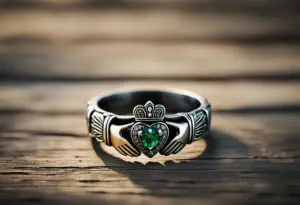The Captivating Stories of All the Pharaohs Named Ramesses

Updated On: February 19, 2024 by Noha Basiouny
On 3 April 2021, Egypt witnessed a magnificent event that caught the eyes of the entire world. Millions around the globe watched in awe the moving of 22 mummies of ancient Egyptian kings and queens from what has been their home for so long, the Egyptian Museum in Tahrir Square, to their new residence in the National Museum of Egyptian Civilisation in Fustat.
Among the mummies was that of King Ramesses II. Besides how handsome he looked, Ramesses II is considered by Egyptologists the most powerful, significant and influential king of ancient Egypt. He is also the most celebrated pharaoh in the world.
But Ramesses II was not the only Ramesses, also spelled as Ramses, in the parade. There were also Ramses III, Ramses IV, Ramses V, Ramses VI, and Ramses IX, or three, four, five, six, and nine, respectively. This makes one wonder how many kings were named Ramses in the first place and, in the second place, whether or not they were all related.
Well, the stories of all the pharaohs named Ramesses are exactly what we will explore in this article. So grab an iced coffee or a cup of hot cocoa, and let’s hop into it.
Ramesses
Ramses is a male name that means son of Ra, and Ra was the Sun god whom ancient Egyptians worshipped. He was the king of all gods and the creator of everything. So for someone to be named the son of god, he must, for sure, be of high status as that of the pharaoh. He must be the pharaoh himself.
In total, there were 11 kings named Ramses, and most of them are somewhat related. The lineage started with Ramesses I, the founder of the 19th Dynasty, and ended 214 years later with the death of Ramses XI, who brought the 20th Dynasty to an end.
But to say that Ramses I founded the 19th Dynasty of ancient Egypt does not actually mean anything, just like how the term ‘nuclear fission’ does not explain how an atomic bomb works. So before we explore the lives of all those Ramseses, we need to briefly look at the development of the ancient Egyptian civilisation.
Ancient Egypt’s periods and dynasties
Scholars estimated that the Egyptian civilisation started in 3150 BC and ended in 525 BC before the Persians conquered Egypt. They divided those thousands of years into several periods based on the development of the country and the level of prosperity it enjoyed at the time.
Each period was then broken down into many dynasties, and every dynasty ruled for a number of years ranging between 21 and 258.
The very first period was, well, the Early Period, followed by the Old Kingdom, the First Intermediate Period, the Middle Kingdom and the Second Intermediate Period. These periods all together comprised 18 dynasties and lasted from 3150 to 1292 BC.
The 18th, 19th, and 20th Dynasties made the New Kingdom period. This was one of the three golden ages of ancient Egypt. During this period, Egypt witnessed a significant development in science, art, and architecture, as well as a high level of political stability and a strong army that allowed the expansion of the Egyptian Empire to Libya, Nubia, and Asia.
All the 11 pharaohs named Ramesses clustered in the 19th and 20th Dynasties, with both stretching from 1292 to 1077 BC and each lasting for 103 and 112 years, respectively.
Since you now, hopefully, have a good idea about where those 11 Ramesseses were in history, let’s go over their stories.
Ramses I (1292 – 1290 BC)
The first pharaoh of the 19th Dynasty and was basically the founder.
Ramesses I was born to a noble family with a military background. His father was an army commander named Seti, and his uncle was related to King Tutankhamun, the famous pharaoh from the 18th Dynasty.
Ramses I grew charismatic. He showed excellent administration skills and became the High Priest. As he was close to Horemheb, the pharaoh of Egypt at the time, the latter appointed him his minister and then his heir since Horemheb did not have children.
Ramses I came to power in 1292 BC. He had only one son named Seti I, so he made him the crown prince. Ramses I ruled for two years, a very short reign that did not allow him to leave any legacy other than some brief development in Karnak Temple. There was not even enough time to build a proper tomb for him, let alone decorate it.

In 1290 BC, Ramses I died and was buried in tomb KV16 in the Valley of the Kings. The tomb was discovered in 1817 by Italian archaeologist Giovanni Belzoni and Ramses I’s mummy is now kept in the Luxor Museum.
Seti I (1290 – 1279 BC)
Son of Ramses I and the second pharaoh of the 19th Dynasty.
Thanks to being a great military leader, Seti I led a series of military campaigns to proclaim Egypt’s dominance over Syria. He fought the Libyans, kicked them out of Egypt, and secured Egypt against the Hittites. The Hittites were an empire based in Anatolia, modern-day Turkey, that threatened Egypt and attacked many cities on the Mediterranean coast.
Seti I had three children, two girls and one boy, whom he named Ramses II in honour of his father.
In 1279 BC, Seti I died and was buried in tomb KV17 in the Valley of the Kings. Unlike his father’s, Seti I’s tomb featured decorations and colourful paintings and comprised many chambers. It was discovered by Giovanni Belzoni, and the mummy is now kept at the Egyptian Museum in Tahrir Square.
Ramses II (1279 – 1213 BC)
Son of Seti I, grandson of Ramses I, and the third pharaoh of the 19th Dynasty.
Like his father, Ramses II was a skilful military leader. One of the highlights of his campaigns was defeating the Hittites at the battle of Kadesh in 1279 BC and signing a peace treaty with them, the first ever of its kind. During his reign, Egypt became a rich country thanks to all the bounty he gained from the other countries he conquered and the victories he made.
Additionally, Ramses II left an architectural legacy best represented by many gigantic statues of himself, the Ramesseum, which is his mortuary temple, and the magnificent temples of Abu Simbel in Aswan.
Ramses II had so many wives, one of whom was the famous Queen Nefertari. He had over 100 children and named so many of them Ramses, too, again in honour of his grandfather. However, he gave each of them an additional name to help distinguish them from one another, such as Ramses-Meryamun. Only one of those Ramseses, Ramses B, was appointed crown prince, but he died while his father was still in power.

After a 66-year-long reign, Ramses II died at 90 and was buried in tomb KV7 in the Valley of the Kings. The tomb was discovered in 1881, and the pharaoh’s mummy is now at the National Museum of Egyptian Civilisation.
Ramses II’s non-Ramses successors (1213 – 1189 BC)
Merneptah, Ramesses II’s fourth child, succeeded him from 1213 to 1203 BC. When he died, his son Seti II was to become the new pharaoh, but he was probably overthrown by Amenmesse, who is thought to be either his brother, Merneptah’s son, or his uncle, Merneptah’s brother, but no one really knows.
Seti II could retrieve his reign in 1200 BC and ruled until he died in 1197 BC. He was followed by Siptah, but no one knows whether the latter was the son of Seti II or Amenmesse. Either way, he was probably Ramses II’s great-grandson.
Siptah ruled until his death in 1191 BC and was followed by Twosret, who is believed to be Seti II’s wife. Since she had no children with Seti II, her death in 1189 BC brought the 19th Dynasty to an end.
20th Dynasty
The 20th Dynasty was established by Setnakhte. According to most records, he was not related to any of his predecessors but could rise to power in a period of instability after Tworset died. That said, some claim he might have been related to Ramses II, maybe the grandson of one of the latter’s many sons.
This might make sense for Setnakhte named his son Ramses III.
Ramses III (1189 – 1155 BC)
Son of Setnakhte, probably a descendant of Ramesses II and the second pharaoh of the 20th Dynasty.
Ramesses III’s reign lasted 34 years, the longest since Ramses II. He made significant developments militarily and architecturally and became one of the most notable pharaohs of the New Kingdom of Egypt.
One highlight of his achievements was defeating the Sea Peoples. Those were groups of violent seafarers who attacked Egypt, Syria, Cyprus, and Palestine and vanished the Hittites altogether.
Ramesses III, too, had many children, three of whom he named Ramses, Ramses IV, Ramses VI and Ramses VIII, and God only knows why he skipped five and seven!
Amenherkhepeshef—do not try to pronounce it— was one of Ramses III’s many sons and was made crown prince, but he died at 15. So his brother, Ramses IV, became the new crown prince.
Ramesses III was assassinated in a conspiracy led by his second wife Tiye and his son with her Pentawere. But before they knew it, Ramses IV, the crown prince, arrested them both and secured his throne by executing them.
Ramses IV (1155 – 1149 BC)
Son of Ramesses III, grandson of Setnakhte, probably a descendant of Ramesses II, and the third pharaoh of the 20th Dynasty.
Ramses IV managed to make some achievements during his relatively short reign. For instance, he continued the work at his father’s temple in Karnak and built a large one for himself near that of Queen Hatshepsut.

Only six years into his reign, Ramses IV died. He was buried in tomb KV2 in the Valley of the Kings, but his mummy was discovered elsewhere in 1898. Now he resides at the National Museum of Egyptian Civilisation.
Ramses V (1149 – 1145 BC)
Son of Ramesses IV, grandson of Ramses III, great-grandson of Setnakhte, probably a descendant of Ramses II, and the fourth pharaoh of the 20th Dynasty.
By the time Ramses V was crowned, Egypt was already troubled. On the inside, the authority of Amun’s priests was increasing at a fast pace. They restrained the pharaoh by controlling most of the land and taking over the finances. As they became more and more powerful, the economy declined just as fast.
The external affairs were also unsettling. The Libyans who were kicked out by Seti I (remember that?) seized on the internal instability and attacked Egypt again. The attacks were even said to have reached Thebes. This so terrorised the workers constructing the royal tombs, including that of Ramses V, in the Valley of the Kings that they stopped working altogether.
Although Ramesses V reigned for four years, only little is known about his achievements, if he ever made any. As he never married, he was succeeded by his uncle Ramesses VI.
Ramses VI (1145 – 1137 BC)
Son of Ramses III, grandson of Setnakhte, probably a descendant of Ramses II, and the fifth pharaoh of the 20th Dynasty.
One notable thing about Ramesses VI is how he dealt with the burial of his nephew, Ramesses V.
According to royal traditions, kings had to be mummified and buried during the first 70 days of the new king’s reign. Ramses V was mummified but not buried because his tomb was left unfinished, thanks to the Libyans’ attacks. Ramses VI was only able to stop those attacks and retrieve stability in the Valley of the Kings in the second year of his reign. Until then, Ramses V was not yet buried.
When the tomb was finally ready, Ramses V was finally buried. But soon after, Ramesses VI moved him to an unknown tomb and seized it. He then ordered its enlargement and redecoration to be suitable for his burial when his time came.
It was also during Ramses VI’s reign that Egypt lost its territories in Asia, which worsened the economy even more. The power of the priests also rose to an incredible level making Egypt so tight on finances. This consequently constrained any building activity. So instead of building new temples, Ramses VI took over the monuments of his great grandfathers, erased their engravings and added his as if he was the one who originally built them.
Ramses VI died in 1137 BC and was succeeded by his son, Ramesses VII.
Ramses VII (1137 – 1130 BC)
Son of Ramses VI, grandson of Ramesses III, great-grandson of Setnakhte, probably a descendant of Ramses II, and the sixth pharaoh of the 20th Dynasty.
Well, not that much is known about the reign of Ramesses VII. Still, it is evident that the Egyptian state continued to decline, especially economically, with the priests becoming even more powerful. Prices skyrocketed, and building activity may have stopped altogether during this period.
Ramses VII died in 1130 BC and was buried in tomb KV1 in the Valley of the Kings. Although his belongings were found in the tomb, his mummy was never found in the tomb or elsewhere.
Ramses VII, too, did not marry, so his uncle, Ramses VIII, succeeded him.
Ramses VIII (1130 – 1129 BC)
Son of Ramesses III, grandson of Setnakhte, probably a descendant of Ramesses II, and the seventh pharaoh of the 20th Dynasty.
As unfortunate as he could be, Ramesses VIII died only a year after becoming the pharaoh, leaving behind no children nor legacy, and was just mentioned once in a single papyrus.
Even his tomb has not yet been located.
Ramses IX (1129 – 1111 BC)
Eighth pharaoh of the 20th Dynasty.
According to some records, Ramses IX was the son of Montuherkhepeshef, who was one of the many sons of Ramesses III and, therefore, the nephew of Ramesses VIII. Despite the financial situation, he managed to do building work in the Sun Temple and renovations in the Temple of Amun-Re in Karnak.
Ramesses IX had three sons, Montuherkhopshef, Ramesses X and Nebmaatre. The first was appointed crown prince but died while his father was still in power, so Ramses X became the heir.
Ramses X (1111 – 1107 BC)
Son of Ramesses IX, great-grandson of Ramesses III, probably a descendant of Ramesses II and the ninth pharaoh of the 20th Dynasty.
Ramses X, too, is quite obscure and very little about his reign was documented. What is known for sure is that Egypt continued its inevitable downfall. The military was weakened, so the Libyans returned to attack Thebes and Upper Egypt. Consequently, work in the Valley of the Kings stopped before the pharaoh’s tomb was finished.
Ramesses X died in 1107 BC, but nobody currently knows where he was buried.
Ramses XI (1107 – 1078 BC)
Tenth and final pharaoh of the 20th Dynasty.
No one knows whether or not Ramses XI was Ramses X’s son, as this was not confirmed anywhere.
Ramesses XI became the king during one of the most conflicted periods in Egypt. The High Priest of Amun took complete control over Thebes and limited the pharaoh’s power to northern Egypt. Then he, the High Priest, went into war with the Nubians to regain power over Nubia, which worsened the situation even more.
The death of Ramesses XI brought the 20th Dynasty, the New Kingdom period, and the actual and nominal lineages of Ramses to an end and opened the door for a new dynasty and a whole new period of history to begin.
The eleven pharaohs named Ramses helped create one of three confirmed golden ages of ancient Egypt. Although a few of them were more obscure than the Moon during a total lunar eclipse, others left a magnificent legacy that has revived their memories for millennia.






